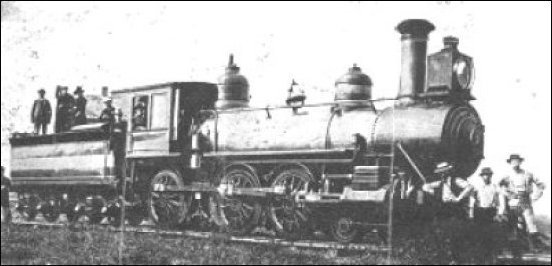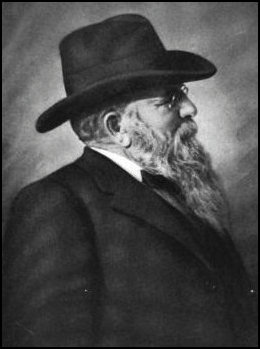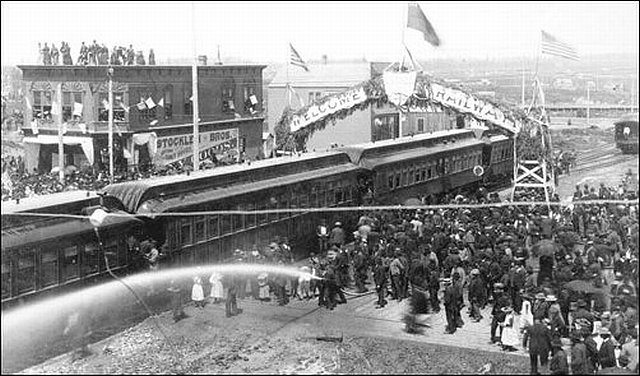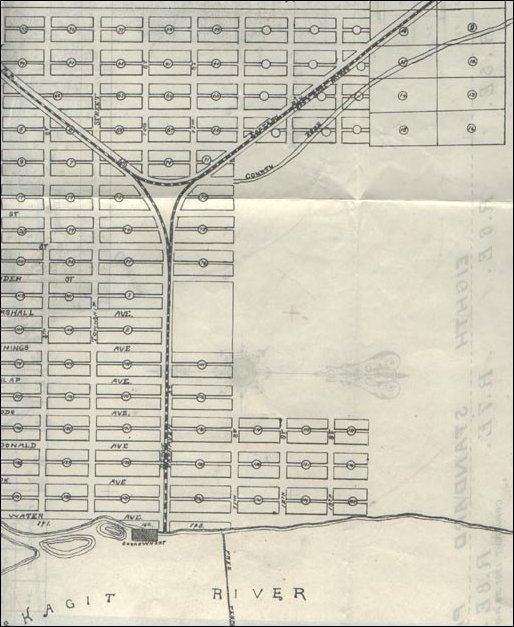When the first train of the Canadian Pacific Railway was scheduled to arrive in New Whatcom on June 22, 1891, on the tracks of the Bellingham Bay & British Columbia that had recently made the border connection at Sumas, there were still great hopes of a transcontinental connection and a western terminus on Bellingham Bay. Our old friend, the late Leroy Kastner, recalled the tale of his father, John Kastner, a blacksmith on the Bay at the time. His father told him about this decorated arch over what is now Railroad Avenue at Holly Street. The rival volunteer firefighting companies set up their hoses on opposite sides of the track, ready to create an even higher arch of water as the locomotive pulled in from the north.
You can read about the resulting waterfight in Jeff Jewell's story, "Notorious blacksmith known for his stories", in the August 2007 Bellingham Business Journal. As he notes, "The Whatcom lads got water pressure first and, weighing their advantage, began spraying the Sehome side. Getting water, the Sehome squad retaliated and suddenly it was an all-out water fight! Torrents played across the shocked spectators as dignitaries dodged for cover!" And then American patriots made the situation even worse by tearing down the Canadian flag, which they judged was higher than the American Old Glory.
Some contend that this incident doomed the Whatcom connection and terminus with the Canadian Pacific Railroad. Kastner moved his blacksmith shop to Railroad Avenue in 1894 and you can find the original location by looking at the horseshoes embedded in the sidewalk outside today's Bagelry shop, near the late and lamented Gus & Nap's Tavern. The photo was taken by E.A. Hegg of Fairhaven. This is from a copy furnished long ago by the late Galen Biery. See the much clearer original in the collection that Jewell oversees at the Whatcom Museum of History & Art.
|

 810 Central Ave.,
810 Central Ave., 




